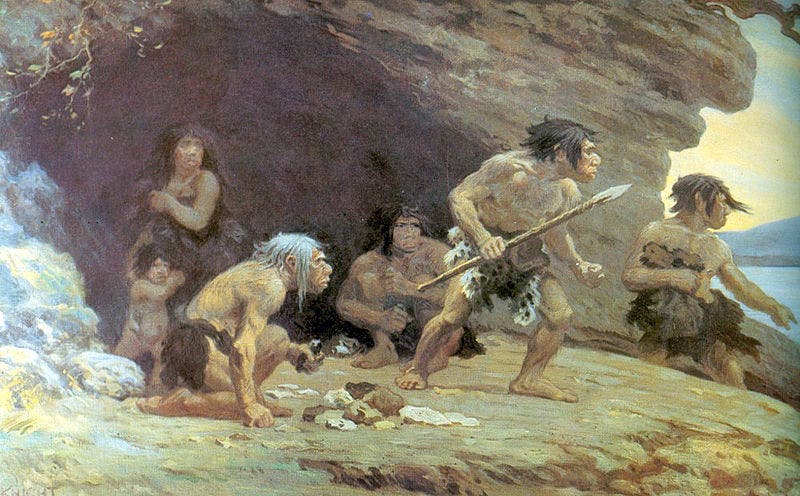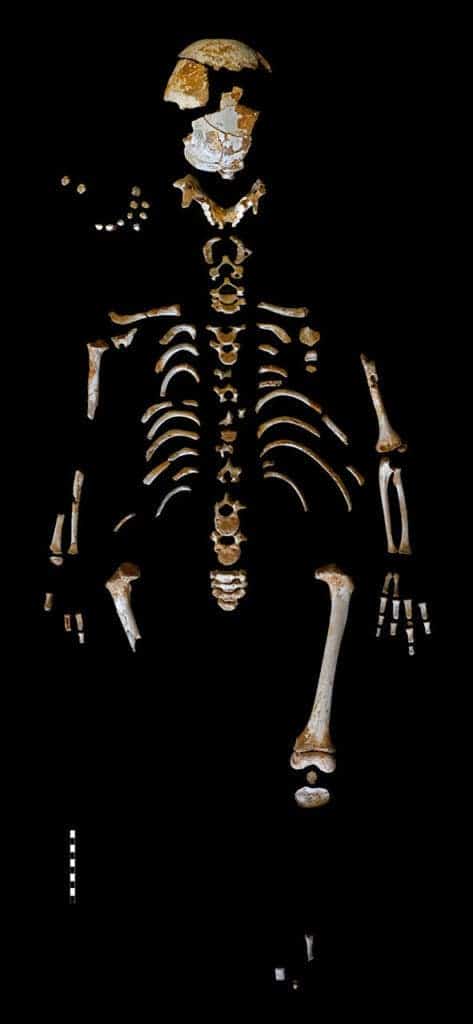The rare discovery of a Neanderthal boy’s partial skeleton suggests he had similar growth patterns to those seen in modern humans. It’s yet another sign that the two species from the same Homo genus were very similar to one another.

The remains of the seven-year-old boy called El Sidron J1 are 49,000 years old. They were unearthed at the El Sidron archaeological site in Spain, a famous middle Paleolithic karst cave which has time and time again revealed insights into the lives of Neanderthals. Previously, bones retrieved from the site indicated Neanderthals engaged in cannibalism.
At the same cave, which stretches for approximately 3,700 meters (2.5 miles), with a central hall of approximately 200 m (650 feet), archaeologists have found over 400 lithic artifacts fashioned by Neanderthals. These include side scrapers, denticulates, hand axes, as well as several Levallois points, all made from local sources, mostly chert, silex, and quartzite.
More of the same
Spanish researchers working with the Paleoanthropology Group at Museo Nacional de Ciencias Naturales report the small Neanderthal boy was still evidently growing when he died. His brain was about 87.5% the size of that of an average adult Neanderthal. By the same age, a modern human boy should have a brain that’s 95% the size of an adult.
The boy’s vertebrae hadn’t yet fused, bone analysis showed. In modern human boys, the same bones typically fuse between age four to six. Limb bones, however, matured at the same rate as human boys, the authors reported in the journal Science.
It might be possible that Neanderthal children enjoyed a longer childhood but it’s far too early to draw such a conclusion. We only have one such specimen, even that made of just 36% of his left side and parts of his skull.

Despite these dissimilarities, Neanderthal and modern human growth patterns are strikingly similar. In fact, it’s rather surprising that the differences are so subtle considering the two species didn’t evolve side by side. After splitting from a common ancestor during the Middle Pleistocene, Neanderthals evolved separately in western Eurasia while humans emerged from Africa.
The boy has been described by researchers as ‘sturdy’, having weighed 26 kilograms at his time of death and standing just over one meter (three and a half feet) tall. The cause of death is unknown though some cut marks on the bones could indicate cannibalism.
The findings cement a growing body of evidence that suggests Neanderthals and modern humans were strikingly similar. Neanderthals practiced rituals, made art, and buried their dead. Artifacts found in such places like El Sidron show that Neanderthals were at least as equally technologically proficient in stone tools as humans.
What’s more, they used manganese dioxide, today commonly found in batteries, to light fires some 50,000 years ago. Another recent study published just earlier this month showed that Neanderthals knew how to manufacture tar a good 200,000 years earlier than modern humans. And, lastly, the most important evidence of Neanderthal and Homo sapiens kinship can be found in almost every living, breathing human on the planet. Most Europeans and Asians have between 1 to 2 percent Neanderthal DNA, remnants from the time the two species interbred.
Neanderthals thrived in Europe from 240,000 to 30,000 years ago, until they abruptly disappeared. It’s thought that a combination of climate change and competition for food with humans wiped them off. Meanwhile, humans have not only risen to the top of the food chain — they’ve also mastered technology that can literally make us shoot for the moon. With this in mind, it’s tempting to consider ourselves as a superior master race. Personally, I can only reflect on a time when there were two Homo species sharing the same planet, until some fluke of fate destroyed one of them. We don’t know for sure what, but who’s to say it couldn’t have been the other way around? A world ruled by Neanderthals, and not us. Now, that would be an interesting place to visit.


